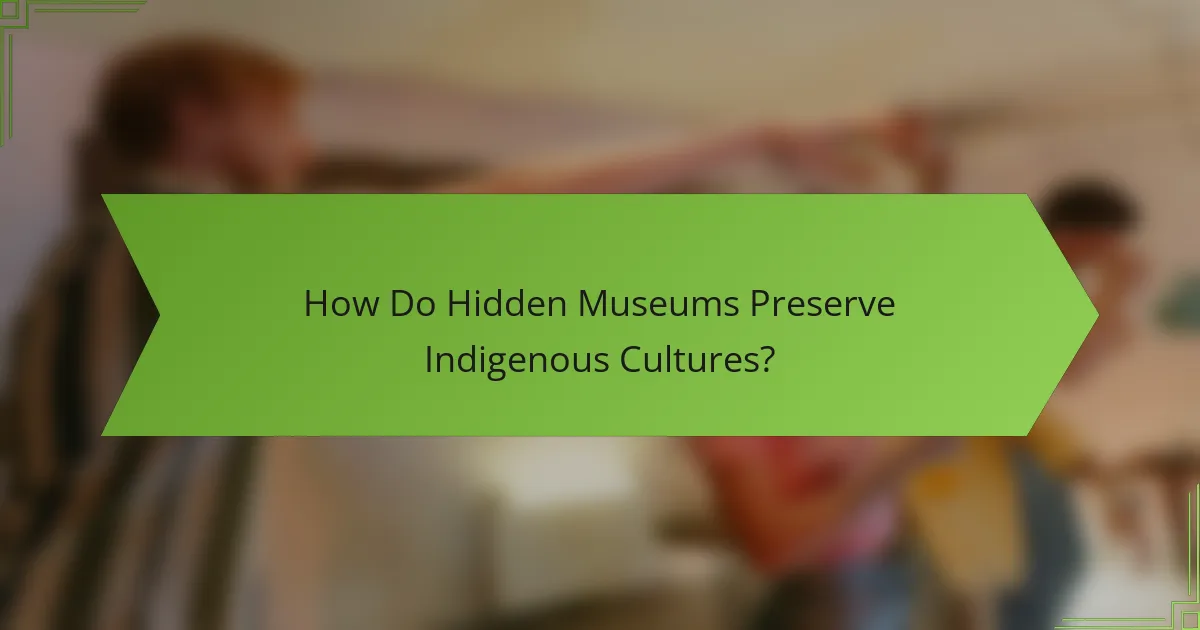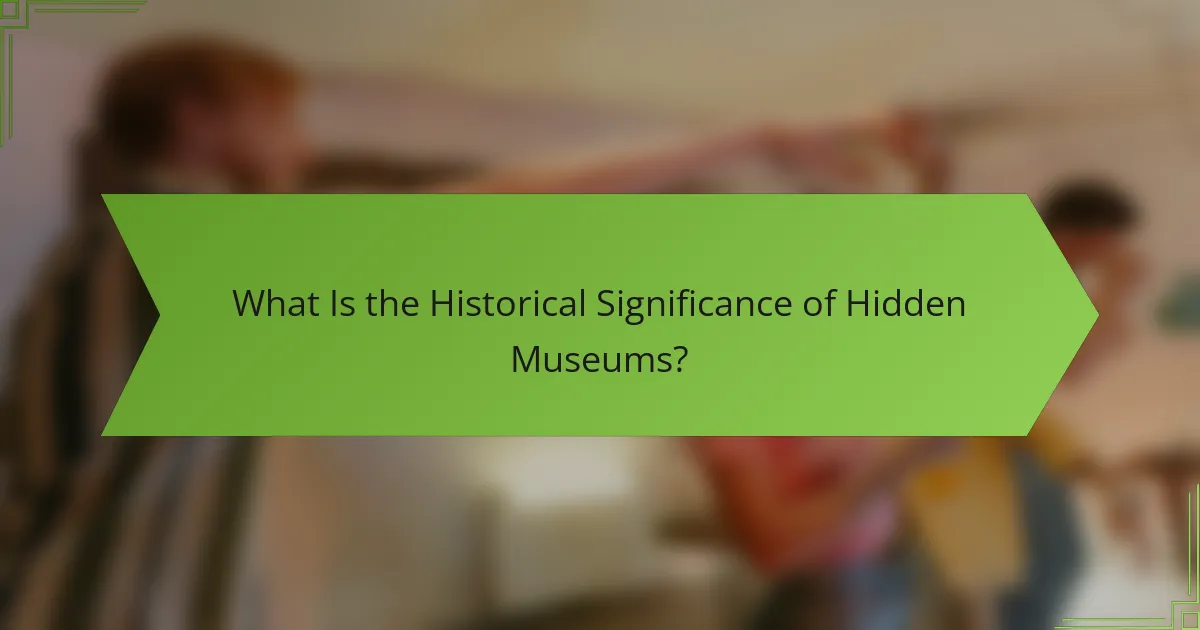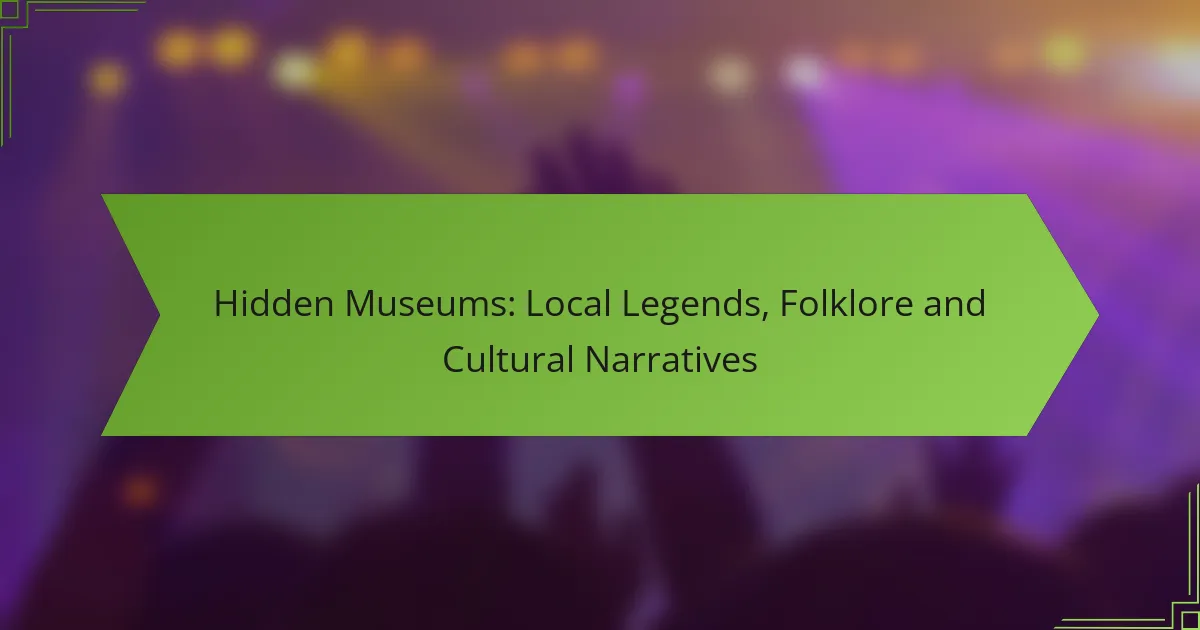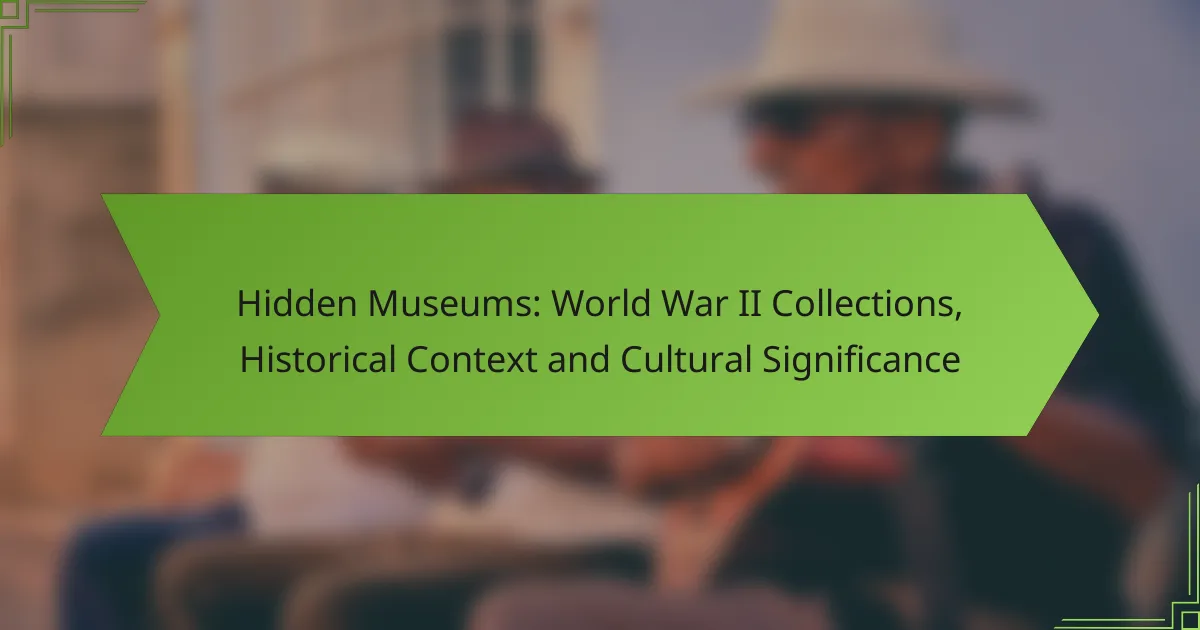Hidden museums dedicated to Indigenous cultures serve as essential guardians of heritage, art, and history, often highlighting narratives that mainstream institutions overlook. These smaller, lesser-known venues not only preserve artifacts and traditions but also amplify the voices of Indigenous communities, ensuring their stories are told and respected. By showcasing the historical significance of Indigenous cultures, these museums provide a richer, more nuanced understanding of our shared cultural heritage.

What Are Hidden Museums of Indigenous Cultures?
Hidden museums of Indigenous cultures are often small, lesser-known institutions that focus on the preservation and exhibition of Indigenous heritage, art, and history. These museums provide a vital platform for showcasing the narratives and artifacts of Indigenous peoples that are frequently overlooked in mainstream institutions.
Definition of hidden museums
Hidden museums are typically characterized by their unique focus on specific cultural narratives, often curated by Indigenous communities themselves. Unlike larger, mainstream museums, they may operate on limited budgets and rely heavily on local support and volunteer efforts.
These institutions often prioritize authenticity and cultural sensitivity, ensuring that the stories told and artifacts displayed are representative of the communities they serve. They play a crucial role in preserving Indigenous knowledge and traditions for future generations.
Examples of hidden museums
Examples of hidden museums include the Indian Pueblo Cultural Center in Albuquerque, New Mexico, which showcases the art and history of the Pueblo people, and the Museum of the Cherokee Indian in North Carolina, dedicated to preserving Cherokee heritage.
Other notable examples are the National Museum of the American Indian in Washington, D.C., which, while more prominent, includes lesser-known exhibits, and various small community-run museums across Canada and Australia that highlight local Indigenous cultures.
Importance of cultural representation
Cultural representation in hidden museums is essential for fostering understanding and respect for Indigenous cultures. These institutions provide a space where Indigenous voices can be heard, allowing for a more accurate portrayal of their histories and contributions.
By highlighting Indigenous perspectives, hidden museums challenge stereotypes and misconceptions, promoting cultural diversity and awareness. They serve as educational resources, encouraging visitors to engage with and learn from Indigenous communities, thus supporting cultural preservation efforts.

How Do Hidden Museums Preserve Indigenous Cultures?
Hidden museums play a crucial role in preserving Indigenous cultures by safeguarding artifacts, stories, and traditions that may otherwise be lost. These institutions often focus on representing the voices and perspectives of Indigenous communities, ensuring that their heritage is maintained and respected.
Methods of cultural preservation
Hidden museums utilize various methods for cultural preservation, including the careful curation of artifacts and the documentation of oral histories. Techniques such as digitization allow for broader access to cultural materials while protecting the originals from deterioration.
Additionally, these museums often engage in collaborative projects with Indigenous artists and scholars to create exhibitions that reflect contemporary cultural expressions. This approach not only preserves traditional practices but also revitalizes them within modern contexts.
Role of community involvement
Community involvement is essential in the preservation efforts of hidden museums. Local Indigenous groups often contribute their knowledge and expertise, ensuring that exhibits accurately represent their cultures and histories. This collaboration fosters a sense of ownership and pride among community members.
Moreover, engaging the community in museum activities, such as workshops and educational programs, helps to pass on cultural knowledge to younger generations. This participatory approach strengthens cultural identity and promotes ongoing dialogue about heritage preservation.

What Is the Historical Significance of Hidden Museums?
Hidden museums play a crucial role in preserving and showcasing the historical significance of indigenous cultures. They often contain artifacts and narratives that challenge mainstream historical accounts, providing a more nuanced understanding of cultural heritage.
Impact on historical narratives
Hidden museums contribute to reshaping historical narratives by presenting perspectives that are often overlooked in conventional institutions. They highlight the stories of marginalized communities, allowing visitors to engage with history from diverse viewpoints.
For example, a hidden museum may focus on the experiences of indigenous peoples during colonization, contrasting with dominant historical accounts that often omit these perspectives. This inclusion fosters a more comprehensive understanding of history and its complexities.
Connection to indigenous heritage
These museums serve as vital links to indigenous heritage, preserving cultural artifacts and traditions that might otherwise be lost. They often feature items created by indigenous artisans, showcasing traditional craftsmanship and cultural practices.
Moreover, hidden museums frequently engage with local indigenous communities, ensuring that their voices are integral to the museum’s narrative. This collaboration not only enriches the museum experience but also reinforces the importance of cultural preservation for future generations.

How Can Digital Products Support Hidden Museums?
Digital products can significantly enhance the visibility and accessibility of hidden museums, particularly those focused on Indigenous cultures. By leveraging technology, these museums can reach broader audiences and facilitate cultural preservation through innovative experiences.
Virtual tours and experiences
Virtual tours allow users to explore hidden museums from anywhere in the world, providing an immersive experience that can showcase artifacts and cultural narratives. These tours can include 360-degree views, audio guides, and interactive elements that engage visitors more deeply than traditional methods.
For effective virtual tours, consider using platforms that support high-quality visuals and user-friendly navigation. Many museums have adopted tools like Google Arts & Culture, which can help create a professional and accessible online presence.
Online educational resources
Online educational resources can provide valuable information about Indigenous cultures and the historical significance of hidden museums. These resources may include articles, videos, and downloadable materials that educators and students can use to enhance learning.
To maximize impact, museums should focus on creating content that is culturally sensitive and accurate. Collaborating with Indigenous communities can ensure that the narratives presented are authentic and respectful, fostering a deeper understanding among audiences.

What Are the Challenges Faced by Hidden Museums?
Hidden museums, often dedicated to Indigenous cultures, face significant challenges that hinder their operation and impact. These challenges primarily include funding and resource limitations, as well as awareness and accessibility issues that affect their visibility and engagement with the public.
Funding and resource limitations
Many hidden museums struggle with inadequate funding, which restricts their ability to maintain exhibits, hire staff, and conduct educational programs. This financial strain often leads to reliance on grants and donations, which can be unpredictable and insufficient for long-term sustainability.
Resource limitations also extend to physical space and technology. Without proper facilities, these museums may not be able to showcase their collections effectively or provide engaging experiences for visitors. For instance, a lack of digital resources can hinder online engagement and outreach efforts.
Awareness and accessibility issues
Awareness of hidden museums is often limited, resulting in low visitor numbers. Many potential visitors may not know these institutions exist or may overlook them in favor of more prominent museums. Effective marketing strategies and community outreach are essential to increase visibility.
Accessibility is another critical concern. Hidden museums may be located in remote areas, making it difficult for visitors to reach them. Additionally, physical accessibility for individuals with disabilities can be lacking, further deterring participation. Addressing these issues requires thoughtful planning and collaboration with local communities to enhance access and awareness.

How Can Visitors Engage with Hidden Museums?
Visitors can engage with hidden museums by actively participating in their offerings and respecting their cultural significance. This includes adhering to guidelines, attending events, and appreciating the unique narratives these museums present.
Visiting guidelines and etiquette
When visiting hidden museums, it is crucial to follow specific guidelines to show respect for the cultural heritage they represent. Always ask for permission before taking photographs, as some artifacts may be sacred or sensitive.
Additionally, dress modestly and maintain a quiet demeanor to honor the traditions of the community. Familiarize yourself with the museum’s rules, as some may require visitors to remove shoes or refrain from touching exhibits.
Participating in local events
Engaging in local events is an excellent way to connect with hidden museums and the communities they serve. Look for workshops, cultural festivals, or guided tours that highlight indigenous practices and historical narratives.
These events often provide hands-on experiences, such as traditional crafts or storytelling sessions, which deepen your understanding of the culture. Check local listings or the museum’s website for upcoming activities, as participation can enhance your visit and support cultural preservation efforts.



